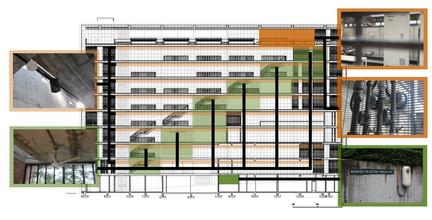
5 minute read
Target 7.A: Promote Access to Research, Technology and Investments in
Target 7.1.2: UNIVERSAL ACCESS TO MODERN ENERGY
Indicator 7.1.2 is the proportion of population with primary reliance on clean fuels and technology. This is measured as the share of the total population with access to clean fuels and technologies for cooking. Access to clean fuels or technologies such as clean cookstoves reduce exposure to indoor air pollutants, a leading cause of death in low-income households.
Advertisement
Responses
1. Fuel-saving vehicle features reduces dependability on fossil fuels.
Challenges
Hybrid vehicle charging pods provided at the outdoor parking lots encourages the use of clean fuel vehicles which are more efficient for city driving. Hence, promotes eco-friendly. transportation alternatives among visitors that visit the building.
Contributions
Hybrid Vehicle Charging Stations (Plug-In).
Hybrid vehicle charging pods provided at the outdoor parking lots encourages the use of clean fuel vehicles which are more efficient for city driving. Hence, promotes eco-friendly transportation alternatives among visitors that visit the building.
Figure 2.1 showcases the plan view location of the hybrid vehicle charging station at which it is located at the front of the building facing Jalan Tandon, which is easily accessible for visitors.
Figure 2.2 showcases the components of the hybrid vehicle charging station which uses AC Charging, hence it consumes less electricity from the electric grid as compared to DC Charging.
Figure 2.1 Location Plan & Figure 2.2 AC Fast Charging Station
Figure 2.3 exhibits the elevation view location of the hybrid vehicle charging station located at the front of the building, beside the main entrance, making it easily accessible and close to the building.
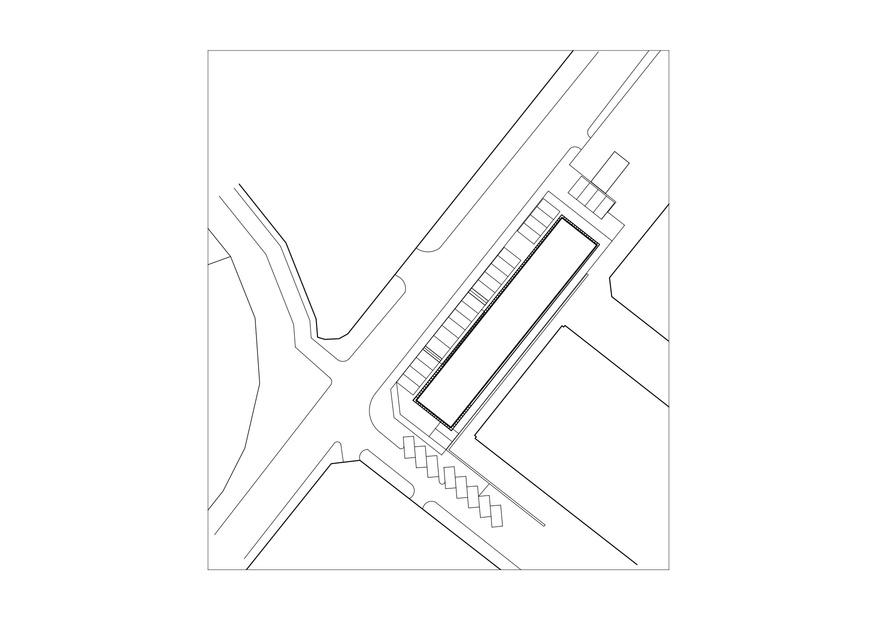
Figure 2.4 exhibits an image of the EVSE charging equipment located at the parking area for hybrid vehicles.

Figure 2.3 Elevation View

Indicator 7.2.1 is renewable energy share in the total final energy consumption. This is measured as renewable energy (inclusive of solar, wind, geothermal, hydropower, bioenergy and marine sources) as a share of final (not primary) energy consumption. Energy mix includes electricity, transportation and cooking/heating fuels.
Responses
1. Rooftop Photovoltaic solar panels to increase surface area exposure to solar energy.
Challenges
The position of the building poses a challenge for the designer as the facades of the building that is most exposed to the sun (East and West facade) are directly blocked by adjacent buildings. Thus, vertically placed PV Cells, although able to generate more renewable energy, may not be able to capture much solar energy.
Contributions
Photovoltaic Panels
A non-mechanical panel that converts sunlight directly into electricity.
Figure 3.1 shows the photovoltaic solar panels placed as part of the roof causes it to occupy a lesser surface area in order to increase its exposure to the sun. Hence, generating only 5-6% of the buildings energy usage but receives maximum exposure to solar energy.
Figure 3.1 Solar Panel on the Roofing

Figure 3.2 shows the energy generated based on the usage of PV (photovoltaic) cells and its contribution to power up building equipment, primarily the lighting systems as well as acts a roofing system for PAM.
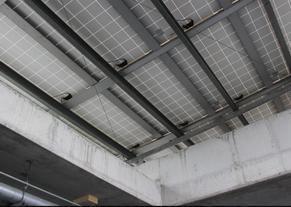
Figure 3.2 Building Equipment Powered by PV cells

Indicator 7.3.1 is energy intensity measured in terms of primary energy and GDP. This is measured as the energy intensity of economies (collectively across all sectors). Energy intensity is measured as the quantity of kilowatt-hours produced per 2011 international-$ of gross domestic product (kWh per 2011 int-$).
Responses
1. Passive design strategies and active energy efficient systems to achieve optimal human comfort while conserving energy.
Challenges
The big consumption on electricity to create an environment within spaces that is optimal for human comfort but at the same time requires less energy to cool and heat.
Contributions
Passive Design is a natural technique of reducing or gaining heat whilst reducing carbon footprint without the help of artificial systems for heating and cooling.
Figure 4.1 shows a Ventilation diagram.
Openings provided on all sides of the building allows cross ventilation. Stepped atriums and open stairs areas allows stack ventilation. Double skin facade of the building ventilates all spaces; reduces need for 24-hour Air-Conditioning and Electric Fans.
Figure 4.1 Cross & Stock Ventilation
Figure 4.2 shows a Shading diagram.
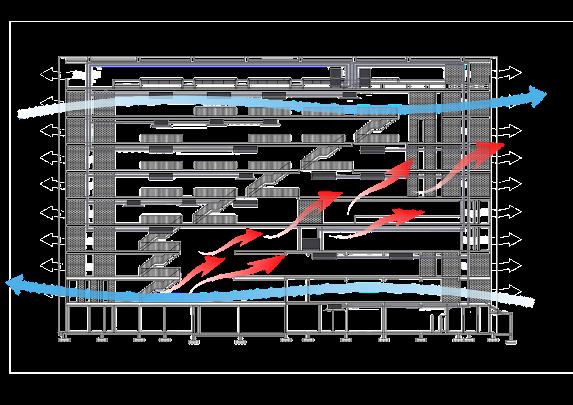
Egg crate external sun shading device terminates the need of 24 hours cooling systems. Trees planted vertically and, on the ground, reduces glare and provides shade on all sides of the building. Perforated fins on the facade blocks out harsh glares and provides thermal comfort. Reduces need for 24-hour Air-Conditioning and Electric Fans.
Figure 4.3 shows a Cooling diagram.
Low-E double glazed tempered glass to maintain cool air within the building. Reduces need for 24-hour Air-Conditioning and Electric Fans.
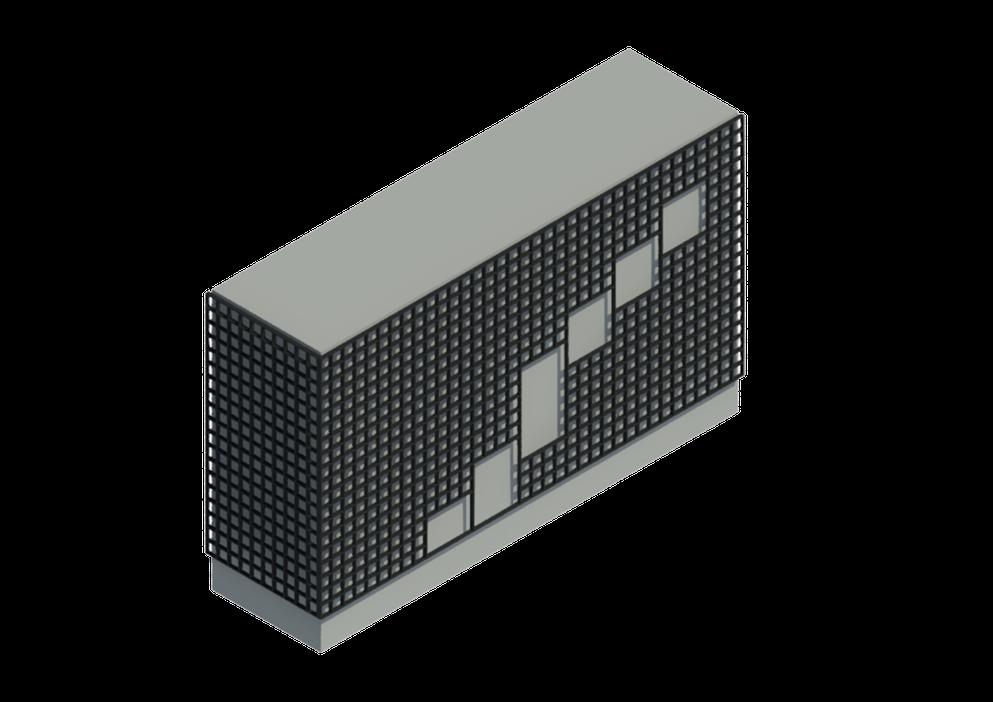
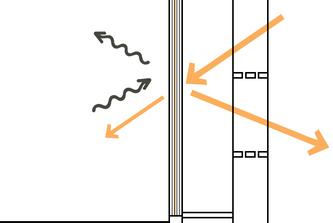
Figure 4.2 Egg-Crate Shading Diagram & Low-E Double Glazed Glass
Indicator 7.3.1 is energy intensity measured in terms of primary energy and GDP. This is measured as the energy intensity of economies (collectively across all sectors). Energy intensity is measured as the quantity of kilowatt-hours produced per 2011 international-$ of gross domestic product (kWh per 2011 int-$).
Responses
1. Passive design strategies and active energy efficient systems to achieve optimal human comfort while conserving energy.
Challenges
The big consumption on electricity to create an environment within spaces that is optimal for human comfort but at the same time requires less energy to cool and heat.
Contributions
Active Energy Efficiency Systems
Active Energy Systems are required for maintaining thermal comfort and achieve desired environmental conditions within a space constantly.
Figure 5.1 shows the building automation.
Digital power meters consist of photo and motion sensors to control general lighting and water usage. Reduces overall energy consumption rate.
Figure 5.2 shows Cooling system
High COP VRF System provides cooling with reduced energy consumption. Energy saving fans provides air movement throughout the building at low energy levels. Reduces energy consumption rates by 11-22%.
Figure 5.3 shows the Rainwater Harvesting
Offsets potable/grey water for flushing and irrigation. Reduces water consumption water supply from local reservoirs. Replaces 40-50% of main water usage from local reservoirs, Available water supply during water cuts.
Figure 5.4 shows varying innovations.
Hybrid vehicle charging stations and bicycle racks. Encourages clean fuel methods of transportation among PAM visitors and building occupants.
Figure 5.1 Digital Motion Sensors

Figure 5.5 Energy Saving Fans Figure 5.3 High Cop VRF Systems
Figure 5.4 Rainwater Harvesting
